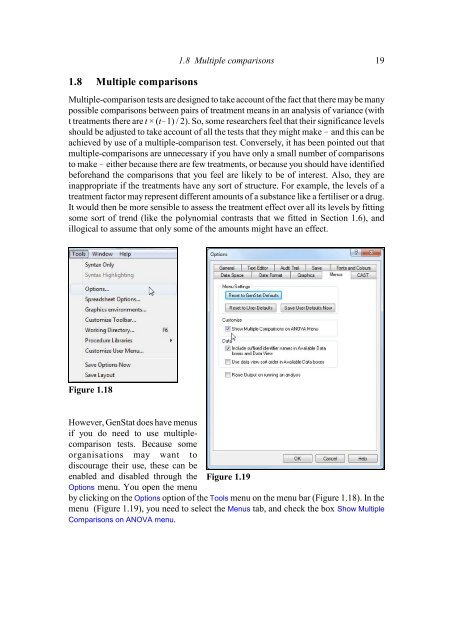Download pdf guide - VSN International
Download pdf guide - VSN International
Download pdf guide - VSN International
Create successful ePaper yourself
Turn your PDF publications into a flip-book with our unique Google optimized e-Paper software.
1.8 Multiple comparisons1.8 Multiple comparisons 19Multiple-comparison tests are designed to take account of the fact that there may be manypossible comparisons between pairs of treatment means in an analysis of variance (witht treatments there are t × (t1) / 2). So, some researchers feel that their significance levelsshould be adjusted to take account of all the tests that they might make and this can beachieved by use of a multiple-comparison test. Conversely, it has been pointed out thatmultiple-comparisons are unnecessary if you have only a small number of comparisonsto make either because there are few treatments, or because you should have identifiedbeforehand the comparisons that you feel are likely to be of interest. Also, they areinappropriate if the treatments have any sort of structure. For example, the levels of atreatment factor may represent different amounts of a substance like a fertiliser or a drug.It would then be more sensible to assess the treatment effect over all its levels by fittingsome sort of trend (like the polynomial contrasts that we fitted in Section 1.6), andillogical to assume that only some of the amounts might have an effect.Figure 1.18However, GenStat does have menusif you do need to use multiplecomparisontests. Because someorganisations may want todiscourage their use, these can beenabled and disabled through the Figure 1.19Options menu. You open the menuby clicking on the Options option of the Tools menu on the menu bar (Figure 1.18). In themenu (Figure 1.19), you need to select the Menus tab, and check the box Show MultipleComparisons on ANOVA menu.
















